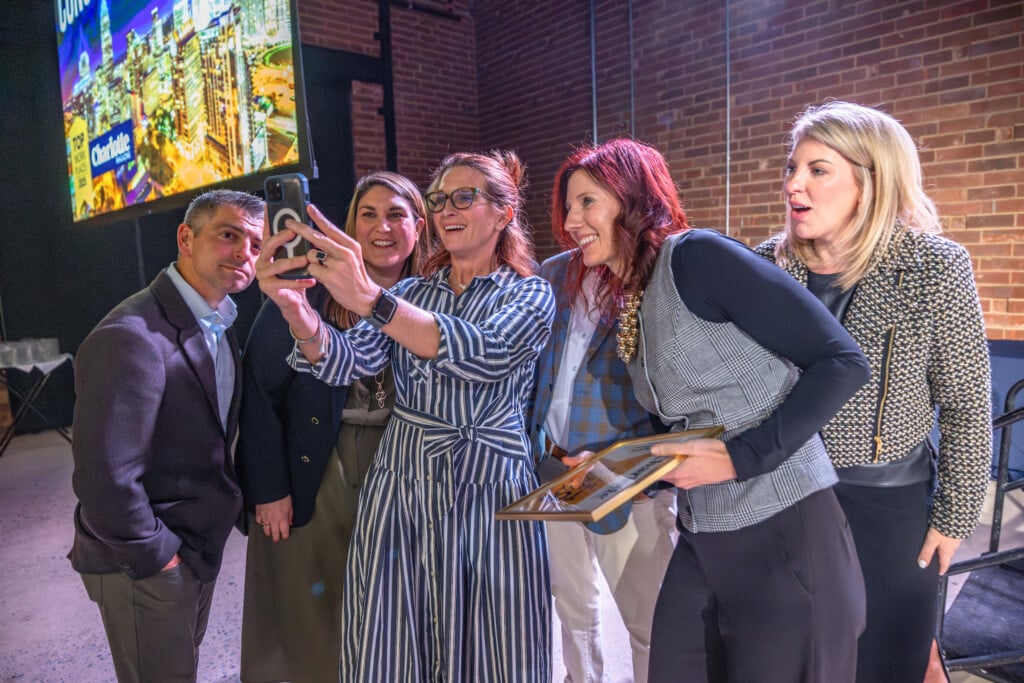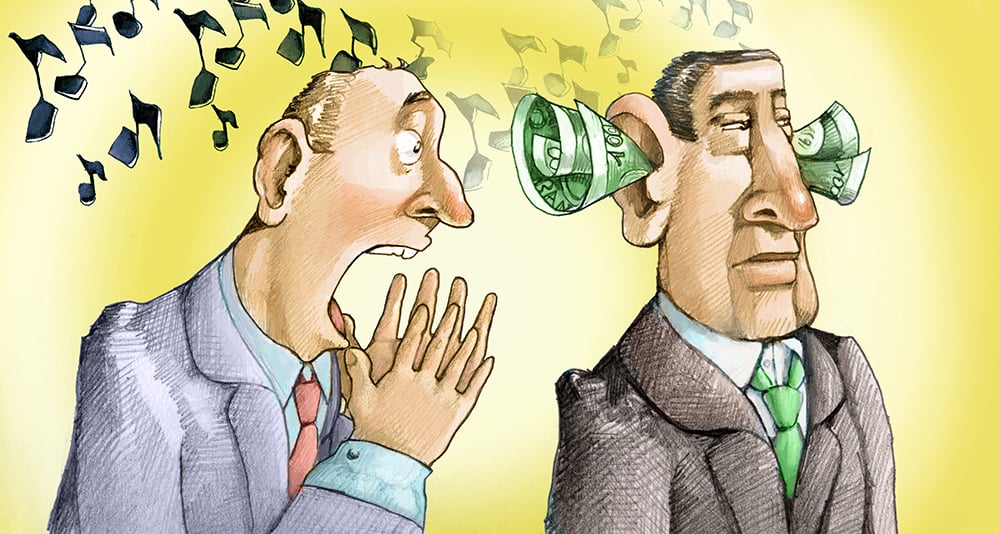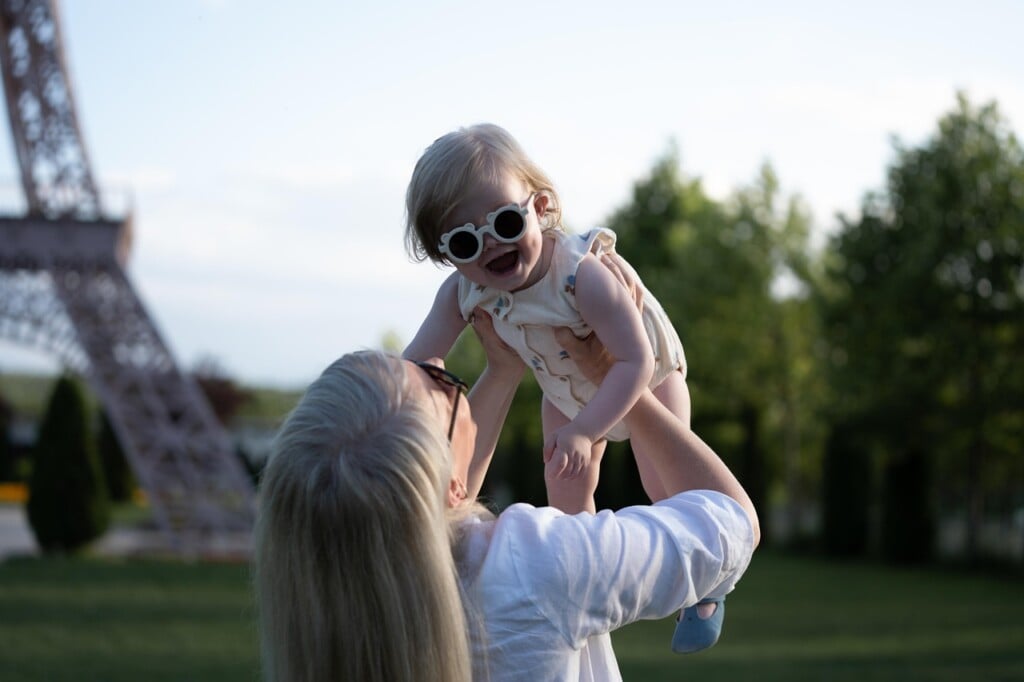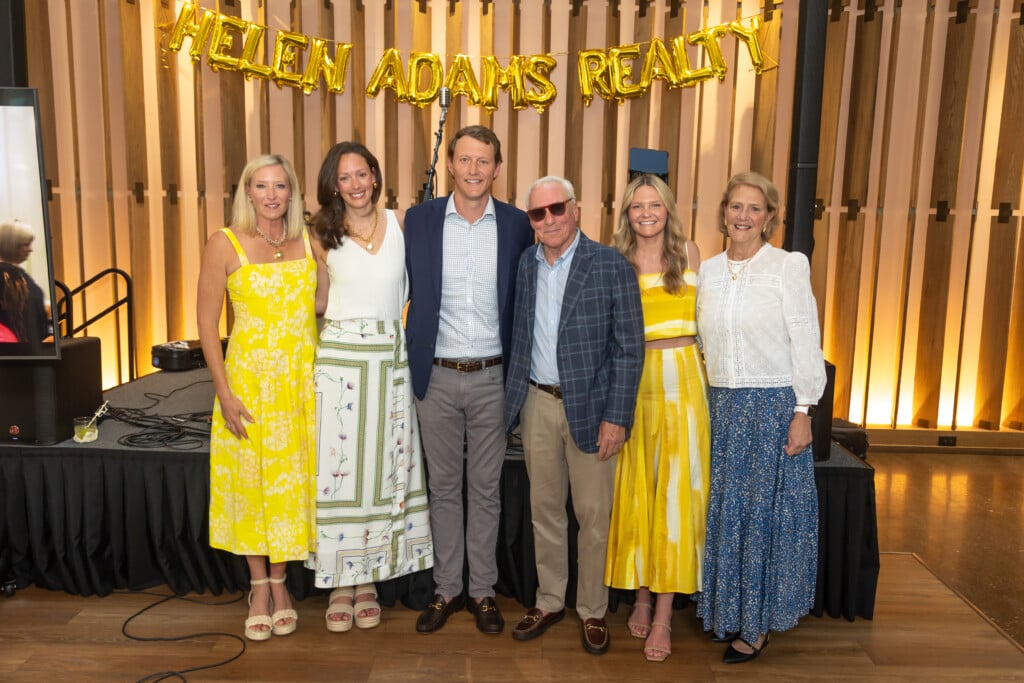We Went Inside The Labyrinth of Charlotte’s Escape Room Scene
The (mostly) mom-and-pop shops are booming, creating immersive experience with puzzles, theatrical sets, and time pressure.
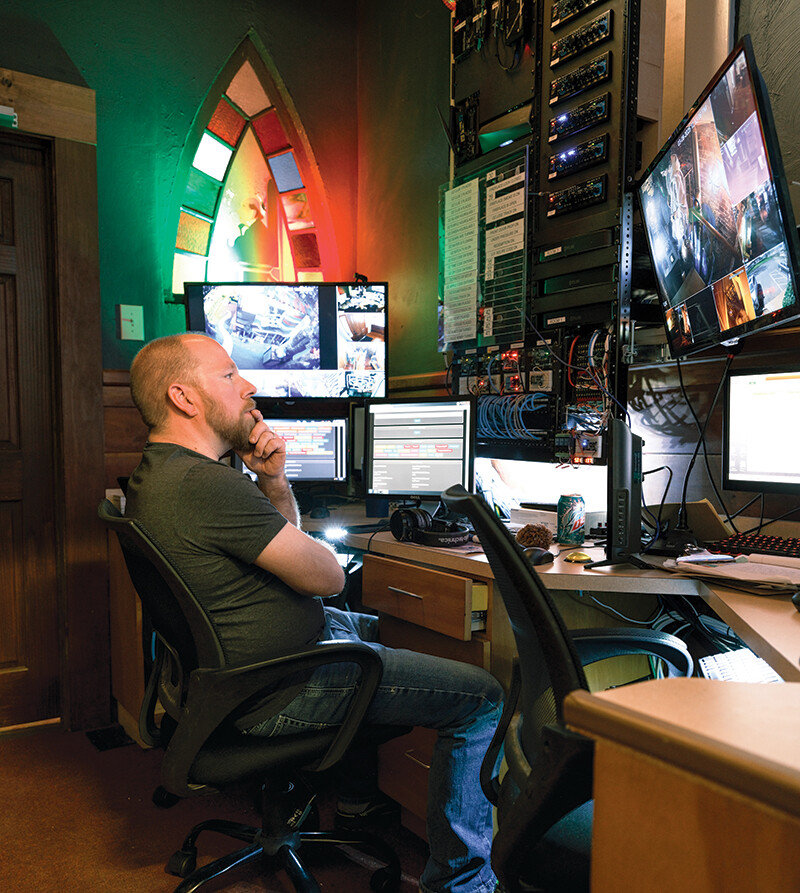
This year, I have activated a beam of light that refracted through the gem on top of a staff to highlight a secret message painted on the floor.
I also have fended off a dragon by waving a wand and reciting an incantation that I had decoded.
I have deciphered a secret message from surveillance video and HVAC schematics to liberate extraterrestrials trapped in a government facility.
Each of these adventures happened in an escape room, which means I paid money to do them with a group of friends while a clock ticked. Escape rooms have boomed in the past decade. Each contains a set of puzzles; the goal is for a small group, usually three to 10, to solve them all within an hour to “escape” the room. (You’re not literally locked in an escape room. If you need to step out for a bathroom break, you can.)
A good escape room feels immersive, like you’ve stepped into an Egyptian tomb or an airplane cockpit (or, at least, the movie versions of those places). Puzzles can involve interpreting wordplay, deciphering maps, or pouring water into a container to make a secret message bob to the top. You almost always need to search an escape room thoroughly—an important clue can be resting on a mantelpiece or hiding in a coat pocket. And sometimes, there’s a magical moment when solving a puzzle unlocks a door to reveal another room … with more puzzles.
People do escape rooms because they want to test their brains with something more challenging than a sudoku, crave the sensation of starring in a heist movie, or want something fun to do with friends for an hour before they go eat nachos. Occasionally, they have other motivations. Chris Burfield, who runs Timed Out Escape in the Whiteoak neighborhood with his wife, Tina, remembers a young woman who came in on a Friday night with four female friends.
“She booked the Illusion room, and they did the game,” he says. “They needed a clue or two, but they got out and had a great time. And then we saw her book another room on the website that night.” (Most escape room businesses host several different rooms under the same roof, for economies of scale: Timed Out has four.) “That’s not unusual—but the weird thing was that she booked Illusion again.”
The next day, she showed up with five male friends, pretended it was her first time in the room, and dazzled her pals by solving one puzzle after another. “They all thought she was Einstein,” Chris says. “We didn’t sell her out.” But her plan worked too well. Her friends were so impressed, they insisted on booking a different room right away. When they played it, they were baffled as to why she no longer had a cavalcade of brilliant insights.
Escape rooms go at least as far back as 16th-century hedge mazes—Theseus versus the Minotaur was a high-stakes mythological escape room—but the modern version originated in Japan in 2007, when Takao Kato had the idea of making a physical version of a puzzle-oriented video game. They quickly became a trend, first as pop-up experiences, then as permanent installations, and spread across Asia and Europe. In 2012, the first escape room in the United States opened in San Francisco.
The watershed moment was 2016, when the number of American escape rooms grew ninefold in a single year. After some retrenching during the pandemic, more than 2,000 escape room locations now operate in the United States. In 2018, the Charlotte area had 11; now, twice as many do business within an hour’s drive.
While there are a few escape room chains in Charlotte (like Escapology, which features branded rooms that are authorized tie-ins to Batman and Scooby-Doo), escape rooms are still basically mom-and-pop stores. They’re profitable enough that people can make viable businesses out of them but not so lucrative that venture capital has swallowed the industry.
Some financials: Most escape rooms charge $30 to $40 per person and require a minimum party of three for an hourlong adventure. A successful escape room facility can gross approximately $300,000 to $500,000 in a year, roughly half of which is profit. The second-biggest expense is usually rent, which is why many escape rooms are in warehouses on the edge of town or in slightly grotty corporate parks.
The biggest expense is building a new room and making it sturdy enough to survive being prodded and manhandled by hundreds of visitors. Depending on the amount of electronics and secret panels and whiz-bang props, that typically costs between $30,000 and $50,000. But some people go all-in: “I’ve got $220,000 in one room, Twist of Oz,” says Roger Siegrist, who owns Key to Escape in Statesville. “Unless you put that in a room, you’re not competitive.”
So why do people start escape rooms?
“We love all things horror,” says Tom Watson, who runs the spooky rooms at Nocturne Adventures with his wife, Nicole, in the basement of their home in Hickory. “You’ve got to do escape rooms because you love them—behind the scenes, the majority of the business is admin and paperwork.”
“I spent my life being involved in youth ministry, but when you get wrinkles, you age out of that,” Ken McCoy of Waxhaw Escape says with a chuckle. He and his wife, Jeannie, started their room “so we can pay our bills into our dotage.” They didn’t have much experience with escape rooms, so they partnered with designers based in Novosibirsk, Russia: “They’re really good at making interactive props and knowing how many puzzles need to happen per space to make it a one-hour experience.”
“Our mantra is ‘where history meets mystery,’” says Siegrist, who established Key to Escape in a historic church. He discovered that church in 2004, when he rode his bicycle from Charlotte to Seattle and a local newspaper then located in the building wrote an article about him. He and his wife, Kim, opened the room in part because people said there was nothing to do in Statesville. Now, they get visitors from Europe who come to their small town just to play their rooms.

How much do escape room operators have to spend? Depends on the operator: Siegrist spent $220,000 on the Twist of Oz room at Key to Escape.
I haven’t opened an escape room (yet), but I’ve designed puzzles and watched people solve them. That experience has taught me the importance of playing fair, laying out enough clues so they don’t have to flail about in frustration. It’s also given me a healthy respect for combined brainpower in puzzle-solving: When people talk out loud about a strange problem instead of staring at it silently, pretty soon, one person’s half-formed idea will lead a friend to the solution. I love that dynamic—which is why I recruit friends to join me in escape rooms so we can jam on absurd enigmas together.
People in the escape room industry sometimes describe rooms as being “gen-1,” “gen-2,” and “gen-3.” The boundaries between them are fuzzy. But generally speaking, the trend is for more technology, more immersive sets, more special effects, and better puzzles. Many rooms are still woefully underlit, but at least it’s relatively uncommon these days that one needs to find secret messages with black-light flashlights.
“I haven’t seen this in a while,” says puzzle designer and escape room enthusiast Eric Berlin, “so hopefully room designers have finally abandoned it: having to go through a cedar chest or laundry hamper filled with random articles of clothing in search of a key hidden somewhere in there.” Puzzle designer Trip Payne gave that unenjoyable challenge the nickname of “crap mountain.”
Escape rooms are seasonal businesses, but the season depends on the location. Rooms on the Outer Banks rely on summer tourists. In Charlotte, the peak of the season is December 28: That’s when families who have spent a week confined to the same house for holiday celebrations get the bright idea of leaving the house … and spending some time together in an even smaller room. Sometimes, that works out great; other times, solving puzzles with time pressure just exacerbates the stress.

Escape rooms’ peak seasons vary depending on where they are. In Charlotte, it’s just after Christmas, when families long to leave the house. This is the Top Shelf Elf room at Key to Escape.
Soon, the Burfields plan to retire a room that contains a particularly fiendish puzzle—they stress that if they were doing it over, they wouldn’t design it to work the same way. It requires four people at different stations to follow directions. If they pay attention and listen to each other, it takes only 60 seconds. But if anyone makes a mistake, they all have to start over. Some groups start screaming at each other.
“You see some couples leave, and they’re walking 10 feet apart from each other,” Tina Burfield confides. “We nicknamed the puzzle ‘The Divorce Attorney’s Friend.’”
The Timed Out control room looks like a cross between a NASA workstation and a car-rental center’s break room. Two large monitors on one wall have 24 surveillance-camera feeds, evenly divided among four escape rooms. On a Saturday afternoon, three active escape rooms are being watched by three Timed Out employees, each seated in front of a large Mac desktop screen with customized software that tracks their group’s progress. Behind them is a microwave and a mini fridge with bottled water.
The shaggy Luca Conti, 18, monitors Precinct, set in an abandoned police station; the Kool Aid-red-haired Finch Hackenberg, also 18, watches Illusion, set in the office of a stage magician. Ian Garner, 39, sports facial hair and multiple tattoos; he has the unflappable calm of a former schoolteacher (which he is). He watches a father shepherd three small children through 51, a room about alien research in Area 51—until he realizes that the father, who has never done an escape room, is overwhelmed by the process of supervising the kids while he tries to solve the puzzles. Garner gets out of his seat and lets himself into the room so he can walk them through it. “This is a lot of energy for one adult,” he tells them, “so I thought I’d come in and join you.”
Usually, the monitors provide clues only via text messages sent to a video screen in the room, and only when they’re asked for one. Each has a microphone handy in case employees need to warn a team away from doing something dangerous or destructive. But they all closely watch the clock—the goal is for teams to have a good time, and if that means ladling out clues more liberally toward the end of the hour so people can have the satisfaction of completing the room, that’s what will happen.
I sit next to Hackenberg, who is watching a group (a mix of adults and tweens) exhibit what she calls “goldfish brain”—they will solve a puzzle that yields a code, then forget to see if they can use that code to unlock another puzzle because they spot a different intriguing object. “I run a D&D campaign for some of my high school friends,” she says, with a mixture of exasperation and affection. “It reminds me a bit of this, because they have very few brain cells.”
She glances at her clock. The group is running behind schedule. “This is a situation I might not be able to get them out of,” she murmurs. Then one of the kids has a crucial insight that involves a multicolored scarf. “Thank you, small child,” she says, “for having critical thinking skills.”
Tina Burfield is busy at the front desk, checking people in and making sure they sign waivers. She’s spent her fair share of hours sitting at the control panels, watching customers—and sometimes paying more attention to their behavior than they do. She remembers one male customer who booked the same room four weeks in a row, in each case with a different date.
“He wasn’t slamming the room,” Tina says, meaning that he let his dates solve the puzzles—he didn’t try to impress them by being a (fake) escape room wizard. Apparently, he thought the room was a congenial venue for a first date. But his fourth time through, he called his date by the wrong name when he asked her if she wanted to grab dinner. Tina could only watch on the monitor, horrified, as the woman’s face froze. At the end of the hour, Tina debriefed them—until the date stalked out. The man looked at Tina, confused. She informed him, “Maybe Betsy was upset that you called her Caroline.”
The Burfields have been married for 27 years. They previously worked corporate jobs in financial services and opened their escape room around the time other people might have been thinking of retiring. They love games and puzzles, but when they played their first escape room eight years ago, a room called Shipwrecked at a now-defunct Charlotte venue called Codescape, something clicked: “We failed at the room, but we thought it was the coolest thing ever,” Chris says. “We’ve tried to play every room we can since then.”
Chris handles most of the technology; Tina deals with the marketing and paperwork; and they design the rooms together, encouraging the staff to contribute. They’ve seen local rooms come and go—some people aren’t ready to run a small business, they say, while others don’t want to think about marketing and hope merely opening their doors will do the job. But the local escape room community is collegial, partially because they all count on each other to convert new customers. People who discover that they enjoy solving escape rooms are likely to check out a variety of escape room venues, but somebody who has a bad time is unlikely to try a different room. So when an escape room venue shakes out a new room, most testers will be employees of other escape rooms.

Timed Out Escape guests can choose from four rooms, including one that takes you inside the alien research center at Area 51.
Timed Out is in an upscale mini-mall next to a tapas restaurant and an organic grocery store; their rent is higher than many other escape room venues, but the location, near office buildings, means they can earn money by hosting corporate workshops during the day. The rooms have more technology than most and less emphasis on immersion than some, but the Burfields are comfortable playing to their strengths. One thing they’re particularly good at is taking feedback and finding ways to improve: They’re about to swap out a submarine-themed room, Depth, because of a narrative gimmick that customers didn’t like. Groups were divided into two halves in two smaller rooms before solving puzzles that let them reunite in a larger room—but some friends hated the idea of being split up, even briefly.
Tina checks in on the control room and warns the monitors that she just scheduled a walk-in party. I ask everyone what they’ve learned about humanity by watching people solve escape rooms.
“Sometimes the most obvious things are not where the mind goes,” Garner says.
“Most of our customers are fantastic,” Tina says, “but after COVID, I’ve noticed that people aren’t as forgiving, and a lot of them don’t know how to socialize anymore.”
Hackenberg says she’s not interested in having children, but she’s much more impressed by them now: “Sometimes kids get things quickly that don’t register with groups of eight adults.”
Conti smiles. “Respectfully,” he says, “I’ve learned to maintain a level of skepticism when people say they’ve done an escape room before.”





